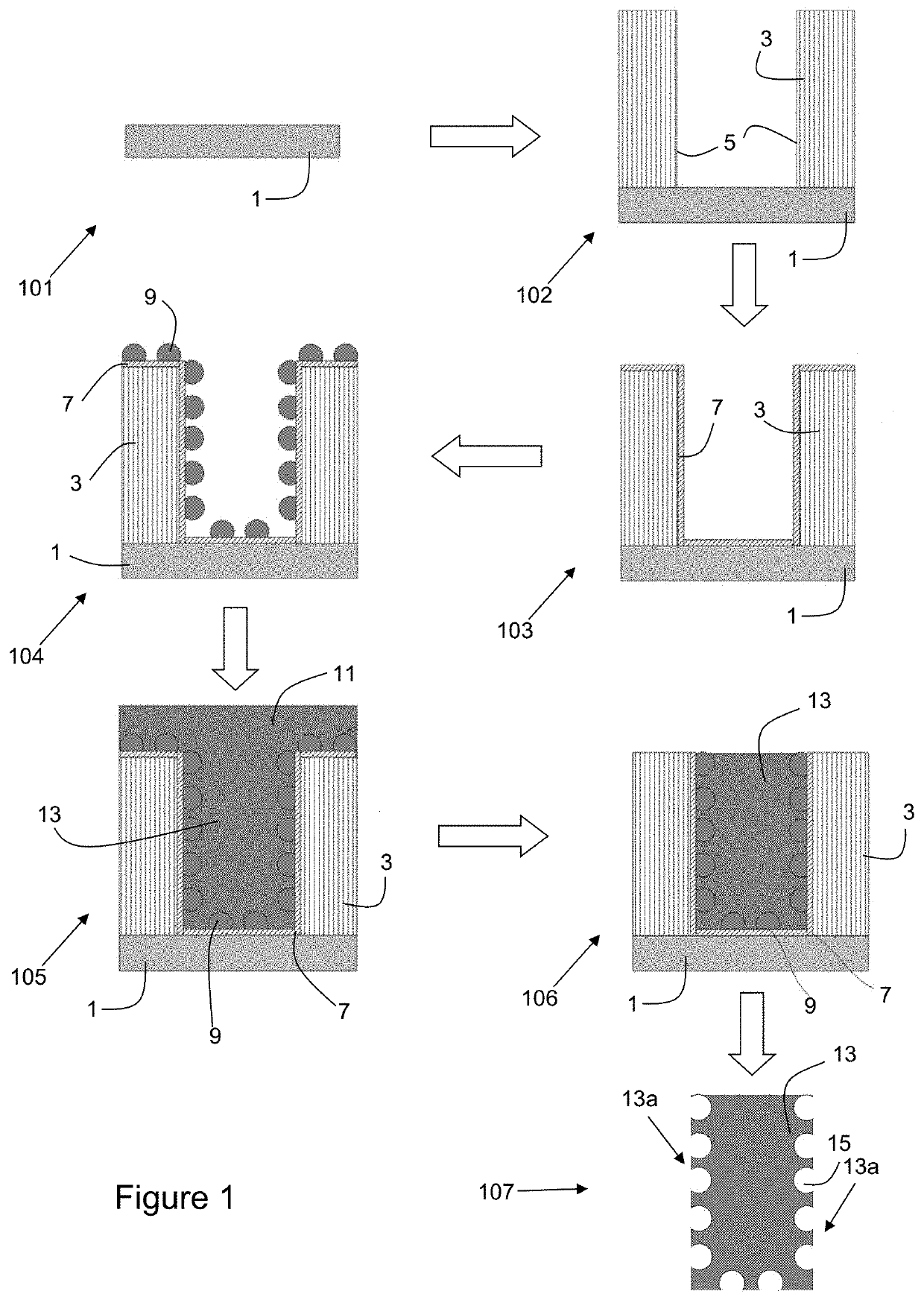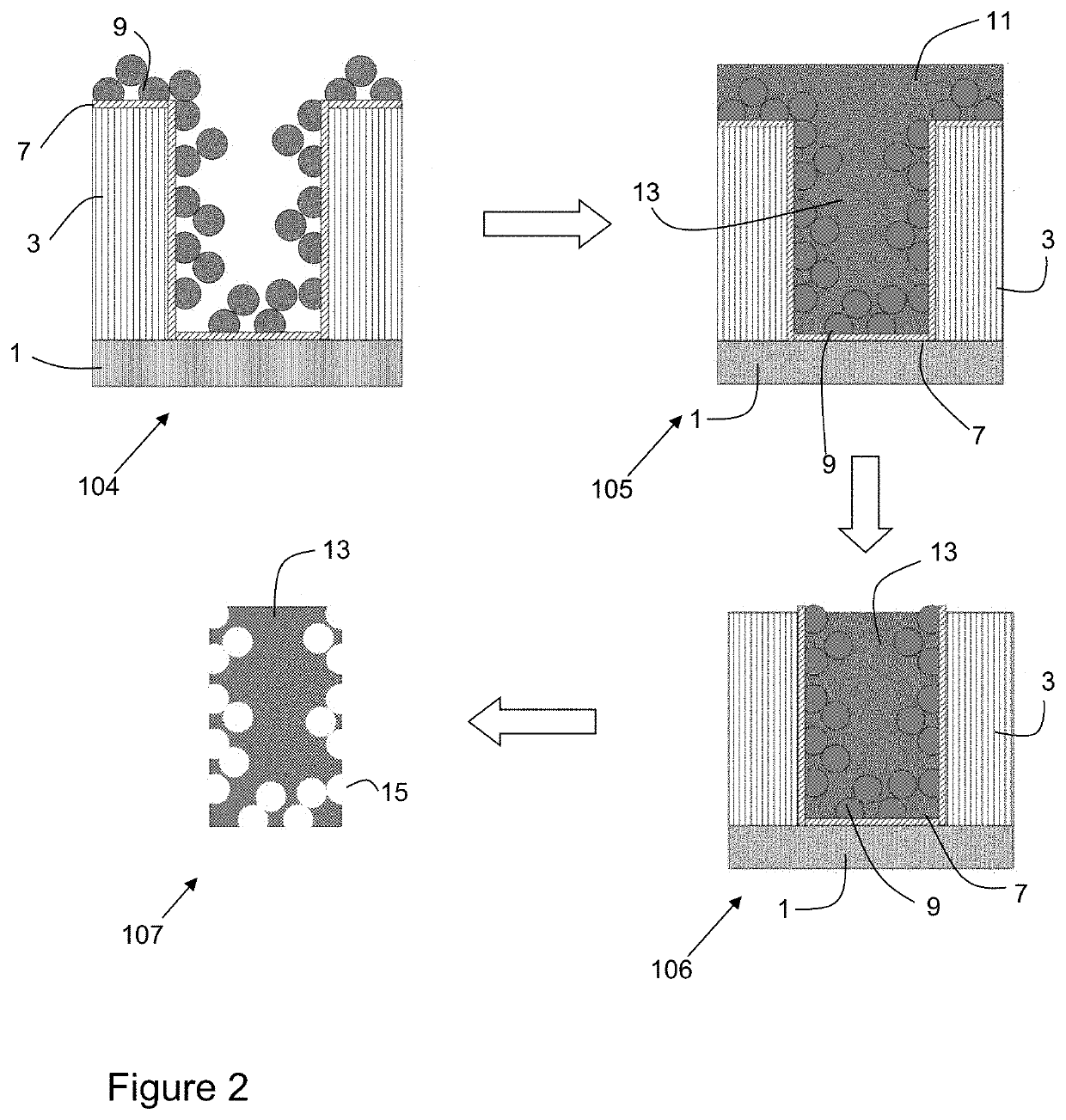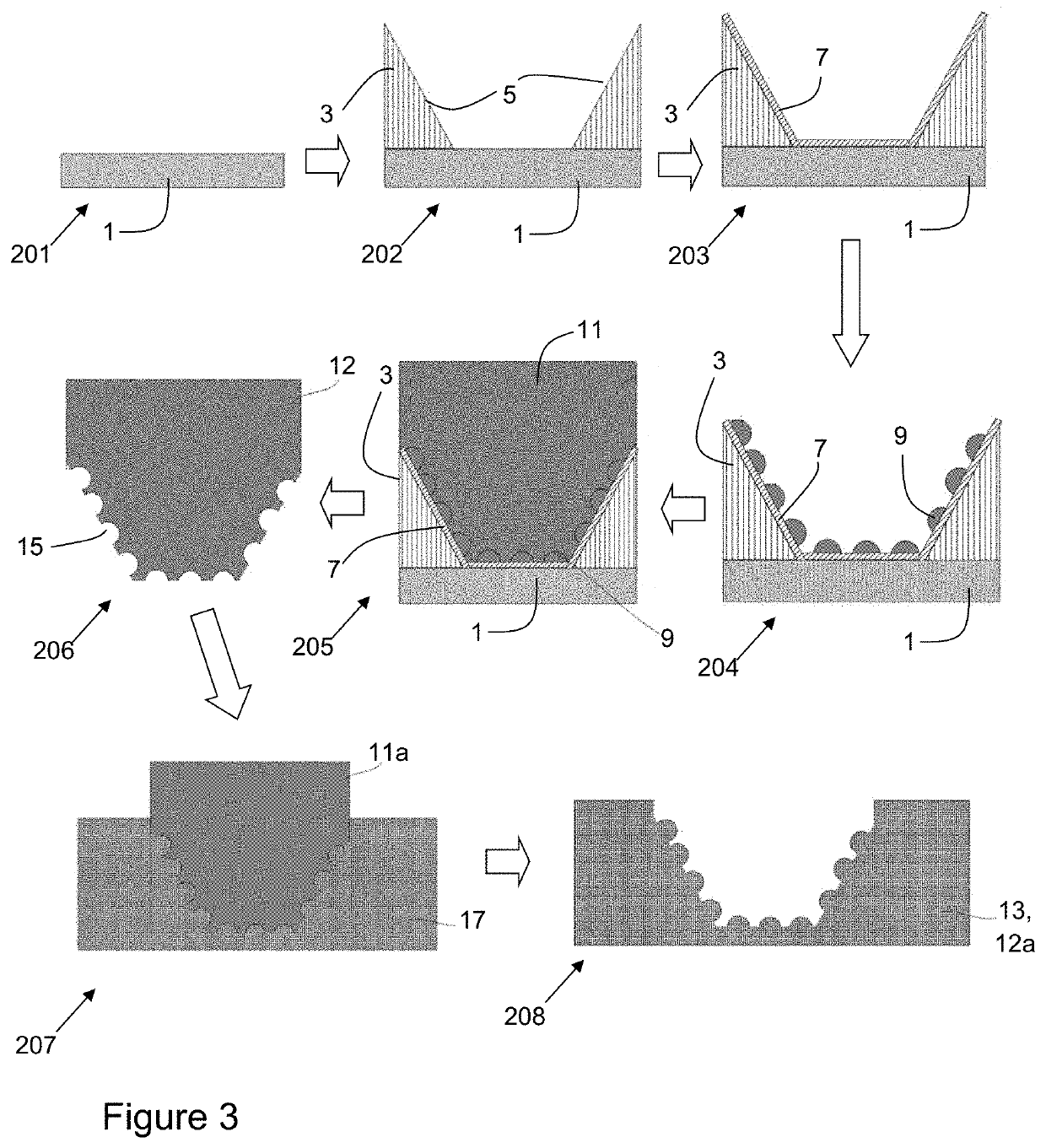Methods for manufacturing micromechanical components and method for manufacturing a mould insert component
a micromechanical and mold insert technology, applied in the field of micromechanics, can solve the problems of random shapes with non-optimal tribological properties, predetermined surface finishes, and well defined length scales of surface structures, and achieve the effect of improving the adhesion of particles
- Summary
- Abstract
- Description
- Claims
- Application Information
AI Technical Summary
Benefits of technology
Problems solved by technology
Method used
Image
Examples
Embodiment Construction
[0054]FIG. 1 illustrates a first embodiment of a method of manufacturing a micromechanical component 13 according to a method of the invention, said micromechanical component being intended to cooperate with another micromechanical component (which may or may not itself be made according to the invention) via a frictional contact, this frictional contact being either static and / or dynamic. This component 13 may be a horological or MEMS component, and may for instance be a gear wheel, a rack, a ratchet, a lever, a cam, a mainspring housing, a jumper spring, an anchor, a clutch, a sliding component, or any other component intended to interact with another via a frictional contact. This contact is typically via the sidewalls of the component 13, these sidewalls joining two faces of the component which each define a plane and which are typically parallel with each other. In other words, the sidewalls do not themselves meet in a sharp point, but rather join with a plane which is at an an...
PUM
| Property | Measurement | Unit |
|---|---|---|
| thickness | aaaaa | aaaaa |
| size | aaaaa | aaaaa |
| size | aaaaa | aaaaa |
Abstract
Description
Claims
Application Information
 Login to View More
Login to View More - R&D
- Intellectual Property
- Life Sciences
- Materials
- Tech Scout
- Unparalleled Data Quality
- Higher Quality Content
- 60% Fewer Hallucinations
Browse by: Latest US Patents, China's latest patents, Technical Efficacy Thesaurus, Application Domain, Technology Topic, Popular Technical Reports.
© 2025 PatSnap. All rights reserved.Legal|Privacy policy|Modern Slavery Act Transparency Statement|Sitemap|About US| Contact US: help@patsnap.com



